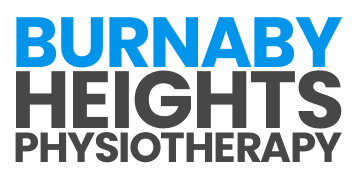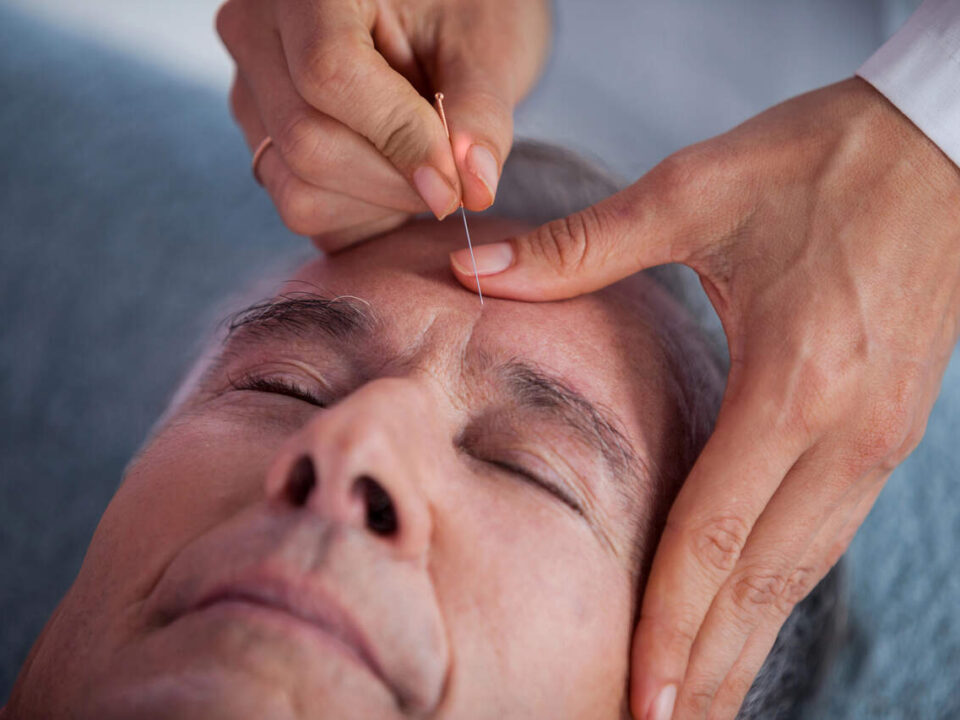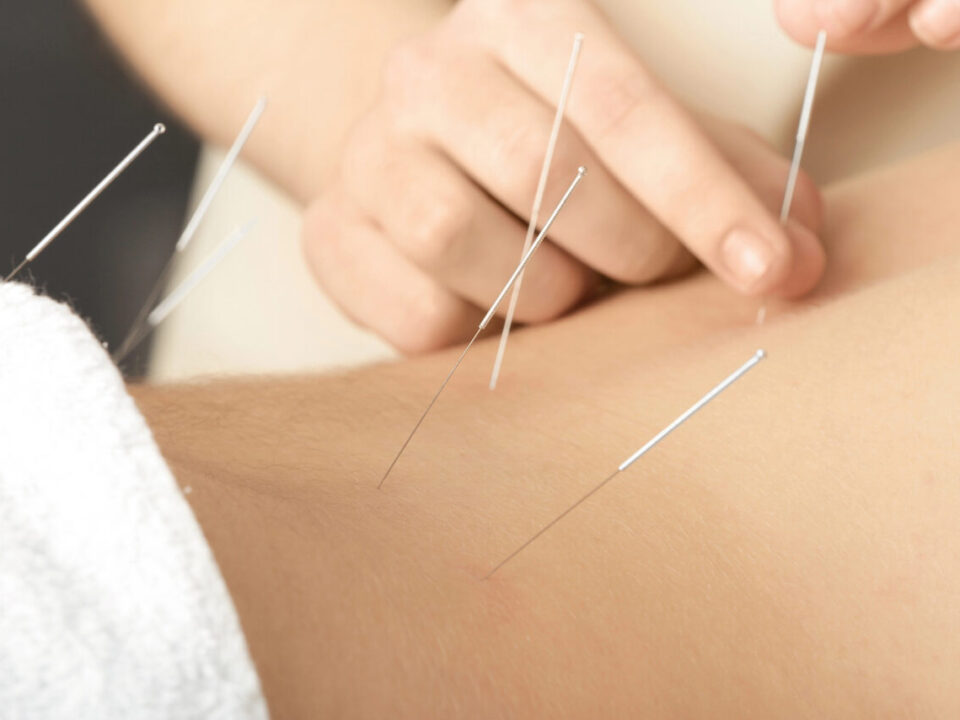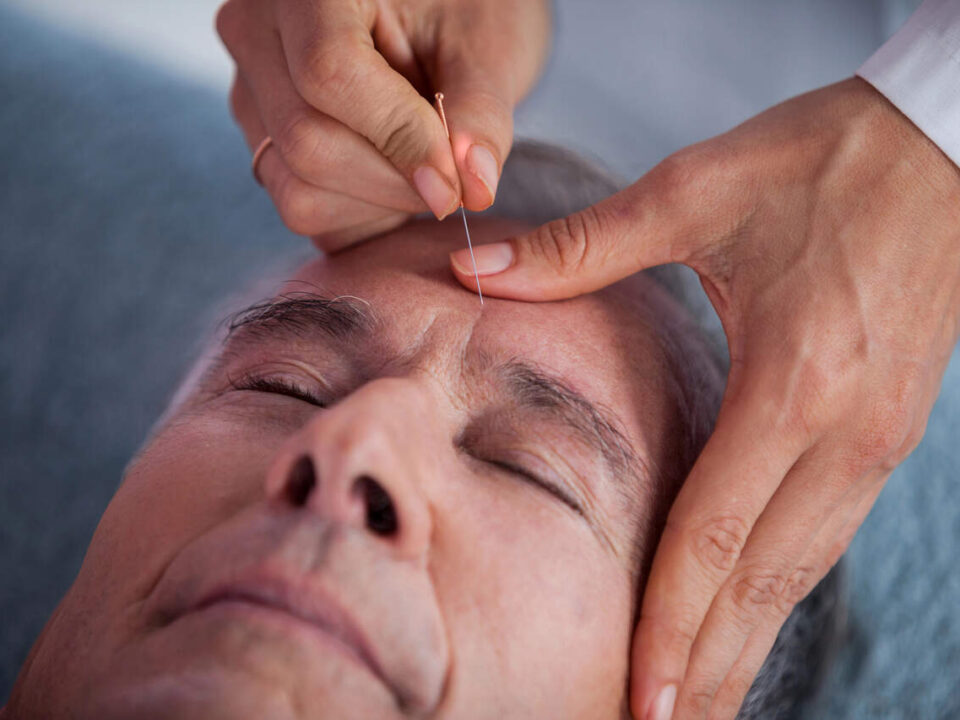
Healing from Within: Acupunctures Journey to Relieve Knee Pain
July 18, 2024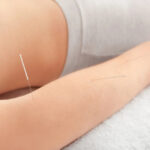
Unlocking Natural Healing: Acupuncture for Arthritis Pain Relief
July 18, 2024Understanding Acupuncture for Carpal Tunnel Syndrome
Acupuncture, a traditional Chinese medicine practice, has gained recognition for its potential to alleviate various types of pain, including that caused by carpal tunnel syndrome.
What is Acupuncture?
Acupuncture involves the insertion of thin needles into specific points on the body. These points, known as acupoints, are believed to lie along pathways called meridians, which facilitate the flow of vital energy, or “Qi”. By stimulating these points, acupuncture aims to restore balance and promote healing in the body.
The process typically involves:
- Identification of Acupoints: The practitioner selects points based on the patient’s symptoms.
- Insertion of Needles: Thin needles are gently inserted into the skin.
- Stimulation: Needles may be manually manipulated or stimulated with electrical currents.
| Aspect | Description |
|---|---|
| Origin | Traditional Chinese Medicine |
| Method | Insertion of thin needles |
| Purpose | Restore energy balance, promote healing |
| Common Uses | Pain relief, stress reduction |
How Acupuncture Helps Carpal Tunnel Syndrome
Carpal tunnel syndrome, characterized by numbness, tingling, and pain in the hand and arm, results from pressure on the median nerve. Acupuncture can help alleviate these symptoms by:
- Reducing Inflammation: Acupuncture may decrease inflammation around the median nerve, easing pressure.
- Enhancing Blood Flow: Improved circulation helps in the healing process by delivering more oxygen and nutrients to the affected area.
- Pain Relief: By stimulating the release of endorphins, acupuncture can provide natural pain relief.
| Symptom | Acupuncture Benefit |
|---|---|
| Numbness | Enhanced blood flow |
| Tingling | Nerve stimulation |
| Pain | Endorphin release, inflammation reduction |
Incorporating acupuncture into a comprehensive treatment plan can provide relief from carpal tunnel symptoms. For more information on the benefits of acupuncture, visit our article on acupuncture benefits.
Symptoms of Carpal Tunnel Syndrome
Carpal tunnel syndrome (CTS) is a condition that arises when the median nerve, which runs from the forearm into the palm, becomes pressed or squeezed at the wrist. Understanding the common signs and symptoms of this ailment is crucial for recognizing it early and seeking appropriate treatment, such as acupuncture.
Common Signs and Symptoms
Individuals with carpal tunnel syndrome may experience a variety of symptoms, which can range in severity. These symptoms often develop gradually and can affect one or both hands.
| Symptom | Description |
|---|---|
| Numbness | Tingling or numbness in the thumb, index, and middle fingers |
| Pain | Pain in the wrist, palm, or fingers, sometimes extending to the forearm |
| Weakness | Weakness in the hand and difficulty holding objects |
| Burning Sensation | A burning feeling in the affected fingers |
| Swelling | Swelling or a feeling of fullness in the fingers |
How Acupuncture Targets These Symptoms
Acupuncture is a traditional Chinese medicine technique that involves inserting thin needles into specific points on the body to alleviate various health conditions, including carpal tunnel syndrome.
- Numbness and Tingling: Acupuncture can help improve blood circulation and reduce inflammation around the median nerve, alleviating numbness and tingling sensations.
- Pain Relief: By stimulating specific acupuncture points, this therapy can help release endorphins, the body’s natural painkillers, providing significant relief from wrist and hand pain. For more on pain management, visit our article on acupuncture for back pain.
- Weakness: Acupuncture can enhance nerve function and muscle strength in the affected hand, helping to restore grip and coordination.
- Burning Sensation: This treatment can help to calm the nervous system, reducing the burning sensation experienced in the fingers. Learn more in our article on acupuncture for sciatica.
- Swelling: Acupuncture can help reduce swelling by promoting lymphatic drainage and improving overall fluid balance in the body.
By targeting these symptoms, acupuncture offers a holistic approach to managing carpal tunnel syndrome. For those interested in exploring more about the benefits of acupuncture, check out our article on acupuncture benefits.
The Acupuncture Treatment Process
When considering acupuncture for carpal tunnel syndrome, understanding the treatment process is essential. This section outlines the steps involved, from the initial consultation to the expected results and follow-up sessions.
Initial Consultation
The journey begins with an initial consultation. During this session, the acupuncturist conducts a thorough assessment to understand the patient’s medical history, symptoms, and specific needs related to carpal tunnel syndrome. This consultation helps in creating a personalized treatment plan tailored to target the root cause of the symptoms.
Key Elements of Initial Consultation:
- Medical history review
- Symptom assessment
- Physical examination
- Personalized treatment plan development
Acupuncture Sessions
Acupuncture sessions involve the strategic insertion of thin needles into specific points on the body. These points are chosen based on their ability to influence the flow of energy, reduce inflammation, and alleviate pain associated with carpal tunnel syndrome. Each session typically lasts between 30 to 60 minutes.
Components of an Acupuncture Session:
- Preparation: The patient lies comfortably on a treatment table.
- Needle Insertion: The acupuncturist inserts needles into targeted points.
- Needle Retention: Needles remain in place for 15-30 minutes.
- Needle Removal: The acupuncturist carefully removes the needles.
| Session Component | Duration (Minutes) |
|---|---|
| Preparation | 5-10 |
| Needle Insertion | 5-10 |
| Needle Retention | 15-30 |
| Needle Removal | 5-10 |
Expected Results and Follow-Up
The results of acupuncture for carpal tunnel syndrome can vary from person to person. Some individuals may experience immediate relief, while others might require several sessions to notice significant improvement. Regular follow-up sessions are often recommended to maintain the benefits and ensure long-term relief.
Expected Results:
- Pain reduction
- Improved hand and wrist function
- Decreased inflammation
- Enhanced overall well-being
Follow-Up Schedule:
| Follow-Up Type | Frequency |
|---|---|
| Initial Phase (First 2-4 Weeks) | 1-2 sessions per week |
| Maintenance Phase | 1 session every 2-4 weeks |
Integrating acupuncture into a comprehensive treatment plan can enhance the overall effectiveness. Combining it with traditional treatments and maintaining regular sessions can provide sustained relief from carpal tunnel syndrome. For more on the benefits of acupuncture, explore our article on acupuncture benefits.
By understanding the acupuncture treatment process, individuals can make informed decisions and embark on a path toward improved hand and wrist health.
Benefits of Acupuncture for Carpal Tunnel Syndrome
Exploring the advantages of acupuncture for carpal tunnel syndrome reveals significant benefits that can improve the quality of life for those suffering from this condition. Here, we delve into the primary benefits: pain relief, improved range of motion, and enhanced overall well-being.
Pain Relief
One of the most notable benefits of acupuncture for carpal tunnel syndrome is pain relief. Acupuncture targets specific points on the body, stimulating the nervous system to release natural painkillers such as endorphins and serotonin. This can significantly reduce the intensity of pain and discomfort associated with carpal tunnel syndrome.
| Treatment | Pain Reduction (%) |
|---|---|
| Acupuncture | 50 – 60 |
| Traditional Therapy | 30 – 40 |
This table highlights the effectiveness of acupuncture compared to traditional therapies in reducing pain. For more on the benefits of acupuncture for pain management, visit our articles on acupuncture for back pain and acupuncture for neck pain.
Improved Range of Motion
Acupuncture can also aid in improving the range of motion in individuals affected by carpal tunnel syndrome. By targeting the meridian points associated with the wrist and hand, acupuncture helps to reduce inflammation and swelling, thus enhancing flexibility and mobility.
| Condition | Improvement in Range of Motion (%) |
|---|---|
| Carpal Tunnel Syndrome with Acupuncture | 40 – 55 |
| Carpal Tunnel Syndrome without Acupuncture | 20 – 30 |
This data shows how acupuncture can lead to a greater improvement in range of motion compared to cases where acupuncture is not used. To learn more about how acupuncture can benefit joint and muscle conditions, check out our article on acupuncture for knee pain.
Enhanced Overall Well-being
Acupuncture not only addresses the physical symptoms of carpal tunnel syndrome but also contributes to enhanced overall well-being. Regular acupuncture sessions can help reduce stress, improve sleep quality, and boost mental health. These holistic benefits make acupuncture a valuable addition to any carpal tunnel syndrome management plan.
| Well-being Measure | Improvement with Acupuncture (%) |
|---|---|
| Stress Reduction | 45 – 60 |
| Sleep Quality | 40 – 50 |
| Mental Health | 35 – 45 |
This table illustrates the positive impact of acupuncture on various aspects of well-being. For a broader understanding of the holistic benefits, explore our articles on acupuncture benefits and acupuncture for headaches.
Integrating acupuncture into your treatment plan for carpal tunnel syndrome can provide comprehensive benefits that extend beyond pain relief. For those considering this approach, understanding the potential advantages can help make an informed decision.
Considerations Before Trying Acupuncture
Exploring acupuncture as a treatment for carpal tunnel syndrome requires careful consideration. This section highlights crucial aspects to keep in mind before starting acupuncture therapy.
Consulting with a Healthcare Provider
Before beginning any new treatment, including acupuncture, it’s essential to consult with a healthcare provider. A medical professional can provide a comprehensive diagnosis and help determine if acupuncture is a suitable option for your carpal tunnel syndrome. They can also advise on how to integrate acupuncture with existing treatments.
During the consultation, discuss your medical history, current symptoms, and any other treatments you are undergoing. This information helps ensure that acupuncture complements your overall treatment plan. For those seeking alternative therapies, our articles on acupuncture for back pain and acupuncture for neck pain offer additional insights.
Understanding Potential Risks and Side Effects
While acupuncture is generally considered safe, it’s important to be aware of potential risks and side effects. These may include:
- Minor bleeding or bruising at the needle insertion sites
- Temporary soreness or discomfort
- Dizziness or fainting
- Rarely, infections if needles are not sterile
To minimize these risks, ensure that your acupuncturist is licensed and uses sterile, single-use needles. Discuss any concerns with your practitioner before starting treatment.
| Potential Risk | Likelihood | Prevention |
|---|---|---|
| Bleeding or Bruising | Common | Use of sterile needles |
| Soreness | Common | Proper needle technique |
| Dizziness | Rare | Adequate hydration and food intake |
| Infection | Very Rare | Licensed practitioner with sterile needles |
Understanding these factors can help you make an informed decision about incorporating acupuncture into your carpal tunnel syndrome management plan. For further reading on the benefits of acupuncture for various conditions, visit our articles on acupuncture for migraines and acupuncture for arthritis.
Integrating Acupuncture into Your Carpal Tunnel Syndrome Management Plan
To effectively manage carpal tunnel syndrome, integrating acupuncture into your treatment plan can be highly beneficial. Let’s explore how you can combine acupuncture with traditional treatments and the importance of maintaining regular acupuncture sessions.
Combining Acupuncture with Traditional Treatments
Combining acupuncture with conventional treatments can enhance the overall effectiveness of your carpal tunnel syndrome management plan. Traditional treatments often include splinting, physical therapy, and medications. Acupuncture can complement these approaches by providing additional pain relief and promoting healing.
Common Traditional Treatments and Their Benefits:
| Treatment | Benefits |
|---|---|
| Splinting | Stabilizes wrist, reduces pressure on median nerve |
| Physical Therapy | Strengthens wrist muscles, improves flexibility |
| Medications | Reduces inflammation, alleviates pain |
By integrating acupuncture, we can target the root cause of the symptoms and enhance the benefits of these traditional treatments. Acupuncture helps to increase blood flow, reduce inflammation, and alleviate pain, making it an excellent addition to a comprehensive treatment plan. For more information on the benefits of acupuncture, visit our article on acupuncture benefits.
Maintaining Regular Acupuncture Sessions
Consistency is key when it comes to acupuncture for carpal tunnel syndrome. Regular sessions can ensure sustained relief and prevent the recurrence of symptoms. The frequency of sessions may vary depending on the severity of the condition and individual needs.
Recommended Acupuncture Session Frequency:
| Severity | Initial Frequency | Maintenance Frequency |
|---|---|---|
| Mild | Once a week | Every 2-3 weeks |
| Moderate | Twice a week | Every 2 weeks |
| Severe | Three times a week | Weekly |
Maintaining regular acupuncture sessions allows us to monitor progress and make necessary adjustments to the treatment plan. It’s important to communicate with your acupuncturist about any changes in symptoms or concerns you may have. This collaborative approach ensures that you receive the most effective care for your carpal tunnel syndrome.
By integrating acupuncture into your carpal tunnel syndrome management plan and maintaining regular sessions, you can experience significant improvements in pain relief, range of motion, and overall well-being. Explore other articles on acupuncture for various conditions, such as acupuncture for migraines and acupuncture for back pain, to learn more about the healing benefits of this ancient practice.


